-
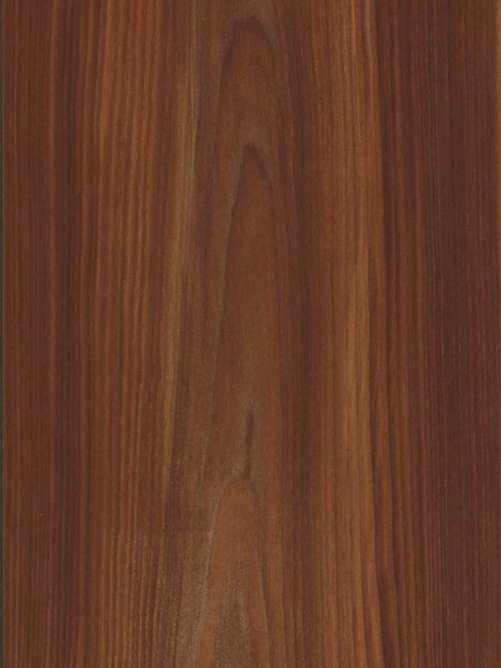 Larch is an exceptionally straight-grained veneer with a reddish-brown heartwood and thin, yellow-white sapwood. This tall, straight tree grows to exceptional heights, producing long lengths of clear veneer, primarily from the heartwood of the tree. Fumed, the typically medium colored wood turns a rich, dark, chocolate brown color reminiscent of African or tropical woods. Learn About Veneer Cut & Matching
Larch is an exceptionally straight-grained veneer with a reddish-brown heartwood and thin, yellow-white sapwood. This tall, straight tree grows to exceptional heights, producing long lengths of clear veneer, primarily from the heartwood of the tree. Fumed, the typically medium colored wood turns a rich, dark, chocolate brown color reminiscent of African or tropical woods. Learn About Veneer Cut & Matching -
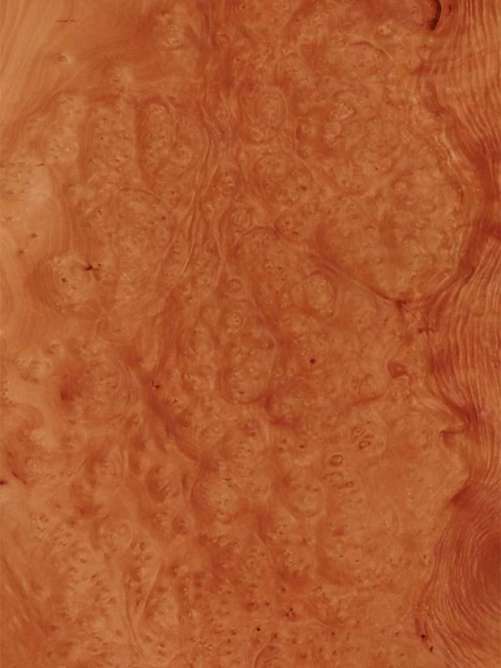 A very little veneer is produced from the trunk, but large growths at the base of the madrona produce this remarkable burl veneer. In what some believe looks like an overhead view of a hilly landscape intertwined with waterways of swirly grain, this warm, inviting, and the choice veneer is highly sought after for high-end architectural installations and custom millwork. Learn About Veneer Cut & Matching
A very little veneer is produced from the trunk, but large growths at the base of the madrona produce this remarkable burl veneer. In what some believe looks like an overhead view of a hilly landscape intertwined with waterways of swirly grain, this warm, inviting, and the choice veneer is highly sought after for high-end architectural installations and custom millwork. Learn About Veneer Cut & Matching -
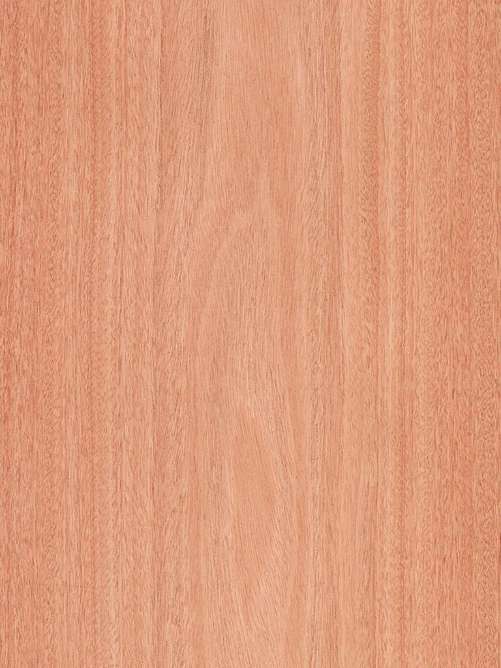 Equally apt in contemporary, global, and traditional settings, mahogany has been traded from African ports for hundreds of years. Typically red to red-brown, and darker than South American mahoganies, this species often develops a plain to ropey stripe and may be marked with highly decorative cross figuring. Crotch veneers with vivid, flame-like patterns are one of nature’s most beautiful works of art. Learn About Veneer Cut & Matching
Equally apt in contemporary, global, and traditional settings, mahogany has been traded from African ports for hundreds of years. Typically red to red-brown, and darker than South American mahoganies, this species often develops a plain to ropey stripe and may be marked with highly decorative cross figuring. Crotch veneers with vivid, flame-like patterns are one of nature’s most beautiful works of art. Learn About Veneer Cut & Matching -
 Equally apt in contemporary, global, and traditional settings, mahogany has been traded from African ports for hundreds of years. Typically red to red-brown, and darker than South American mahoganies, this species often develops a plain to ropey stripe and may be marked with highly decorative cross figuring. Crotch veneers with vivid, flame-like patterns are one of nature’s most beautiful works of art. Learn About Veneer Cut & Matching
Equally apt in contemporary, global, and traditional settings, mahogany has been traded from African ports for hundreds of years. Typically red to red-brown, and darker than South American mahoganies, this species often develops a plain to ropey stripe and may be marked with highly decorative cross figuring. Crotch veneers with vivid, flame-like patterns are one of nature’s most beautiful works of art. Learn About Veneer Cut & Matching -
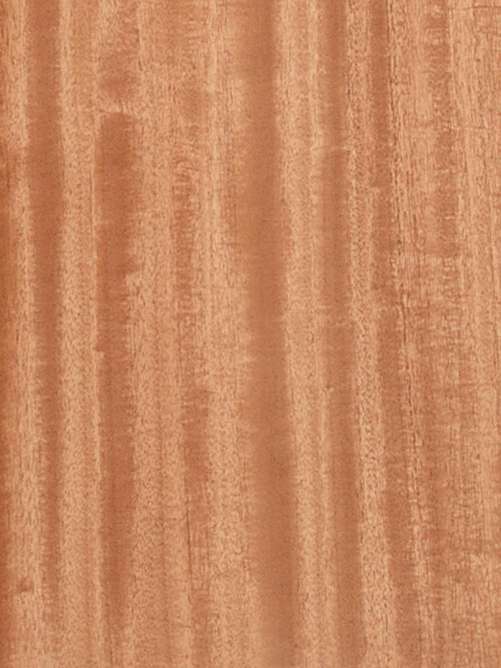 Equally apt in contemporary, global, and traditional settings, mahogany has been traded from African ports for hundreds of years. Typically red to red-brown, and darker than South American mahoganies, this species often develops a plain to ropey stripe and may be marked with highly decorative cross figuring. Crotch veneers with vivid, flame-like patterns are one of nature’s most beautiful works of art. Learn About Veneer Cut & Matching
Equally apt in contemporary, global, and traditional settings, mahogany has been traded from African ports for hundreds of years. Typically red to red-brown, and darker than South American mahoganies, this species often develops a plain to ropey stripe and may be marked with highly decorative cross figuring. Crotch veneers with vivid, flame-like patterns are one of nature’s most beautiful works of art. Learn About Veneer Cut & Matching -
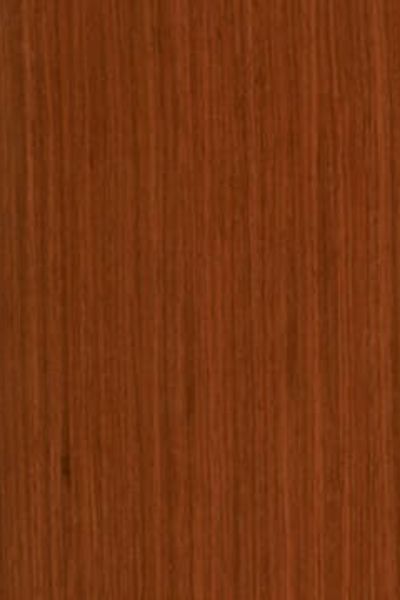 Brookside Veneers, Produced by Alpi Spa. Learn About Veneer Cut & Matching
Brookside Veneers, Produced by Alpi Spa. Learn About Veneer Cut & Matching -
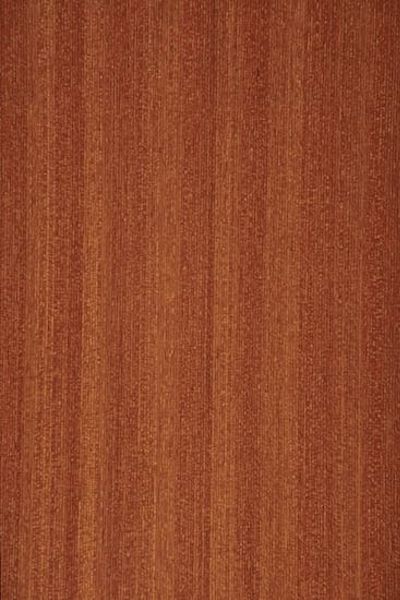 Brookside Veneers, Produced by Alpi Spa. Learn About Veneer Cut & Matching
Brookside Veneers, Produced by Alpi Spa. Learn About Veneer Cut & Matching -
 Equally apt in contemporary, global, and traditional settings, mahogany has been traded from African ports for hundreds of years. Typically red to red-brown, and darker than South American mahoganies, this species often develops a plain to ropey stripe and may be marked with highly decorative cross figuring. Crotch veneers with vivid, flame-like patterns are one of nature’s most beautiful works of art. Learn About Veneer Cut & Matching
Equally apt in contemporary, global, and traditional settings, mahogany has been traded from African ports for hundreds of years. Typically red to red-brown, and darker than South American mahoganies, this species often develops a plain to ropey stripe and may be marked with highly decorative cross figuring. Crotch veneers with vivid, flame-like patterns are one of nature’s most beautiful works of art. Learn About Veneer Cut & Matching -
 Also called African cherry, Makore shares the light pink to deep red coloring, dark growth lines, and small pores common to cherry. In architectural installations, it has the added benefit of availability in large sizes not found in American cherry. Cut on the quarter, Makore shows a contrasting stripe that may be plain or crossed with a variety of decorative figures. Flat cut, it bears the distinctive cathedral grain pattern. Learn About Veneer Cut & Matching
Also called African cherry, Makore shares the light pink to deep red coloring, dark growth lines, and small pores common to cherry. In architectural installations, it has the added benefit of availability in large sizes not found in American cherry. Cut on the quarter, Makore shows a contrasting stripe that may be plain or crossed with a variety of decorative figures. Flat cut, it bears the distinctive cathedral grain pattern. Learn About Veneer Cut & Matching -
 Also called African cherry, Makore shares the light pink to deep red coloring, dark growth lines, and small pores common to cherry. In architectural installations, it has the added benefit of availability in large sizes not found in American cherry. Cut on the quarter, Makore shows a contrasting stripe that may be plain or crossed with a variety of decorative figures. Flat cut, it bears the distinctive cathedral grain pattern. Learn About Veneer Cut & Matching
Also called African cherry, Makore shares the light pink to deep red coloring, dark growth lines, and small pores common to cherry. In architectural installations, it has the added benefit of availability in large sizes not found in American cherry. Cut on the quarter, Makore shows a contrasting stripe that may be plain or crossed with a variety of decorative figures. Flat cut, it bears the distinctive cathedral grain pattern. Learn About Veneer Cut & Matching -
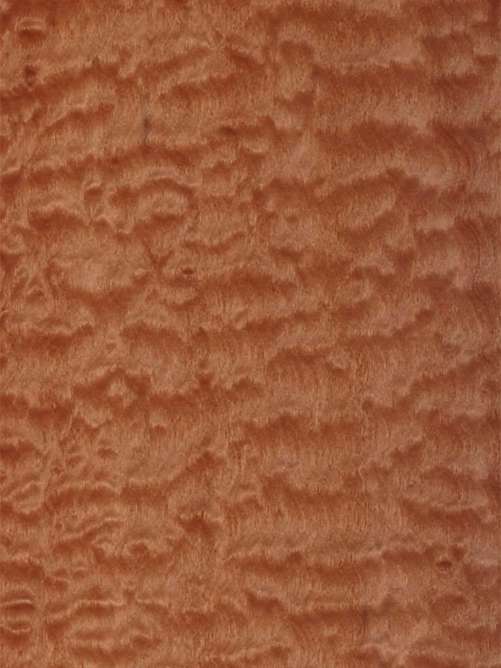 Also called African cherry, Makore shares the light pink to deep red coloring, dark growth lines, and small pores common to cherry. In architectural installations, it has the added benefit of availability in large sizes not found in American cherry. Cut on the quarter, Makore shows a contrasting stripe that may be plain or crossed with a variety of decorative figures. Flat cut, it bears the distinctive cathedral grain pattern. Learn About Veneer Cut & Matching
Also called African cherry, Makore shares the light pink to deep red coloring, dark growth lines, and small pores common to cherry. In architectural installations, it has the added benefit of availability in large sizes not found in American cherry. Cut on the quarter, Makore shows a contrasting stripe that may be plain or crossed with a variety of decorative figures. Flat cut, it bears the distinctive cathedral grain pattern. Learn About Veneer Cut & Matching -
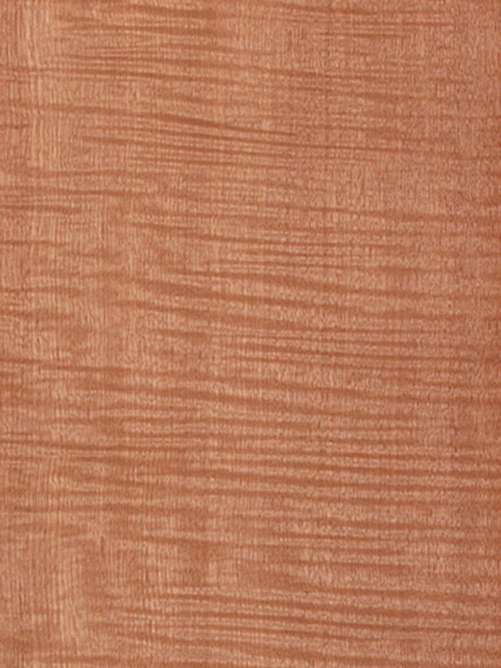 Also called African cherry, Makore shares the light pink to deep red coloring, dark growth lines, and small pores common to cherry. In architectural installations, it has the added benefit of availability in large sizes not found in American cherry. Cut on the quarter, Makore shows a contrasting stripe that may be plain or crossed with a variety of decorative figures. Flat cut, it bears the distinctive cathedral grain pattern. Learn About Veneer Cut & Matching
Also called African cherry, Makore shares the light pink to deep red coloring, dark growth lines, and small pores common to cherry. In architectural installations, it has the added benefit of availability in large sizes not found in American cherry. Cut on the quarter, Makore shows a contrasting stripe that may be plain or crossed with a variety of decorative figures. Flat cut, it bears the distinctive cathedral grain pattern. Learn About Veneer Cut & Matching -
 Also called African cherry, Makore shares the light pink to deep red coloring, dark growth lines, and small pores common to cherry. In architectural installations, it has the added benefit of availability in large sizes not found in American cherry. Cut on the quarter, Makore shows a contrasting stripe that may be plain or crossed with a variety of decorative figures. Flat cut, it bears the distinctive cathedral grain pattern. Learn About Veneer Cut & Matching
Also called African cherry, Makore shares the light pink to deep red coloring, dark growth lines, and small pores common to cherry. In architectural installations, it has the added benefit of availability in large sizes not found in American cherry. Cut on the quarter, Makore shows a contrasting stripe that may be plain or crossed with a variety of decorative figures. Flat cut, it bears the distinctive cathedral grain pattern. Learn About Veneer Cut & Matching -
 Brookside Veneers, Produced by Alpi Spa. Learn About Veneer Cut & Matching
Brookside Veneers, Produced by Alpi Spa. Learn About Veneer Cut & Matching -
 From the same tree that produces maple syrup, comes this beautiful veneer that ranges in color from snow white to warm yellow; has a close, fine luminous texture; and a lovely straight grain that may be interspersed with natural character marks. A wide range of gorgeous figures and wild grain distortions—from curly to bird’s eye to maple burl—are sought after for distinctive paneling and furniture. Flat cut maple displays the distinctive heart or cathedral pattern. Learn About Veneer Cut & Matching
From the same tree that produces maple syrup, comes this beautiful veneer that ranges in color from snow white to warm yellow; has a close, fine luminous texture; and a lovely straight grain that may be interspersed with natural character marks. A wide range of gorgeous figures and wild grain distortions—from curly to bird’s eye to maple burl—are sought after for distinctive paneling and furniture. Flat cut maple displays the distinctive heart or cathedral pattern. Learn About Veneer Cut & Matching -
 From the same tree that produces maple syrup, comes this beautiful veneer that ranges in color from snow white to warm yellow; has a close, fine luminous texture; and a lovely straight grain that may be interspersed with natural character marks. A wide range of gorgeous figures and wild grain distortions—from curly to bird’s eye to maple burl—are sought after for distinctive paneling and furniture. Flat cut maple displays the distinctive heart or cathedral pattern. Learn About Veneer Cut & Matching
From the same tree that produces maple syrup, comes this beautiful veneer that ranges in color from snow white to warm yellow; has a close, fine luminous texture; and a lovely straight grain that may be interspersed with natural character marks. A wide range of gorgeous figures and wild grain distortions—from curly to bird’s eye to maple burl—are sought after for distinctive paneling and furniture. Flat cut maple displays the distinctive heart or cathedral pattern. Learn About Veneer Cut & Matching -
 From the same tree that produces maple syrup, comes this beautiful veneer that ranges in color from snow white to warm yellow; has a close, fine luminous texture; and a lovely straight grain that may be interspersed with natural character marks. A wide range of gorgeous figures and wild grain distortions—from curly to bird’s eye to maple burl—are sought after for distinctive paneling and furniture. Flat cut maple displays the distinctive heart or cathedral pattern. Learn About Veneer Cut & Matching
From the same tree that produces maple syrup, comes this beautiful veneer that ranges in color from snow white to warm yellow; has a close, fine luminous texture; and a lovely straight grain that may be interspersed with natural character marks. A wide range of gorgeous figures and wild grain distortions—from curly to bird’s eye to maple burl—are sought after for distinctive paneling and furniture. Flat cut maple displays the distinctive heart or cathedral pattern. Learn About Veneer Cut & Matching -
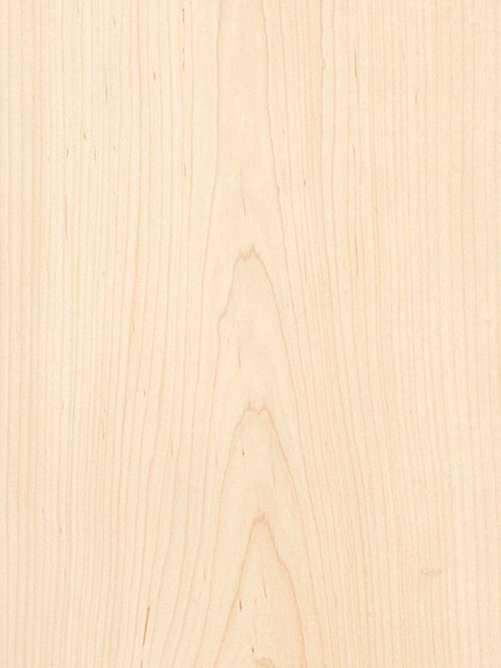 From the same tree that produces maple syrup, comes this beautiful veneer that ranges in color from snow white to warm yellow; has a close, fine luminous texture; and a lovely straight grain that may be interspersed with natural character marks. A wide range of gorgeous figures and wild grain distortions—from curly to bird’s eye to maple burl—are sought after for distinctive paneling and furniture. Flat cut maple displays the distinctive heart or cathedral pattern. Learn About Veneer Cut & Matching
From the same tree that produces maple syrup, comes this beautiful veneer that ranges in color from snow white to warm yellow; has a close, fine luminous texture; and a lovely straight grain that may be interspersed with natural character marks. A wide range of gorgeous figures and wild grain distortions—from curly to bird’s eye to maple burl—are sought after for distinctive paneling and furniture. Flat cut maple displays the distinctive heart or cathedral pattern. Learn About Veneer Cut & Matching -
 From the same tree that produces maple syrup, comes this beautiful veneer that ranges in color from snow white to warm yellow; has a close, fine luminous texture; and a lovely straight grain that may be interspersed with natural character marks. A wide range of gorgeous figures and wild grain distortions—from curly to bird’s eye to maple burl—are sought after for distinctive paneling and furniture. Flat cut maple displays the distinctive heart or cathedral pattern. Learn About Veneer Cut & Matching
From the same tree that produces maple syrup, comes this beautiful veneer that ranges in color from snow white to warm yellow; has a close, fine luminous texture; and a lovely straight grain that may be interspersed with natural character marks. A wide range of gorgeous figures and wild grain distortions—from curly to bird’s eye to maple burl—are sought after for distinctive paneling and furniture. Flat cut maple displays the distinctive heart or cathedral pattern. Learn About Veneer Cut & Matching -
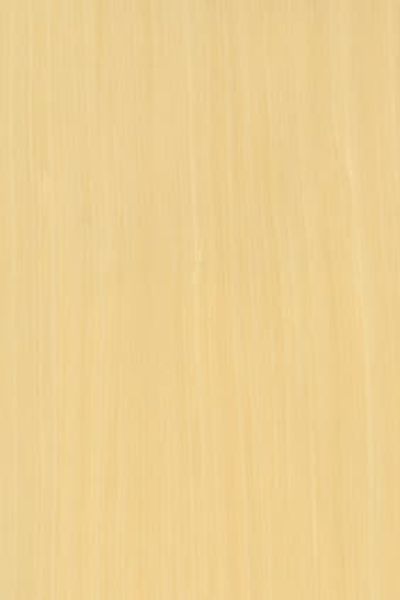 Brookside Veneers, Produced by Alpi Spa. Learn About Veneer Cut & Matching
Brookside Veneers, Produced by Alpi Spa. Learn About Veneer Cut & Matching -
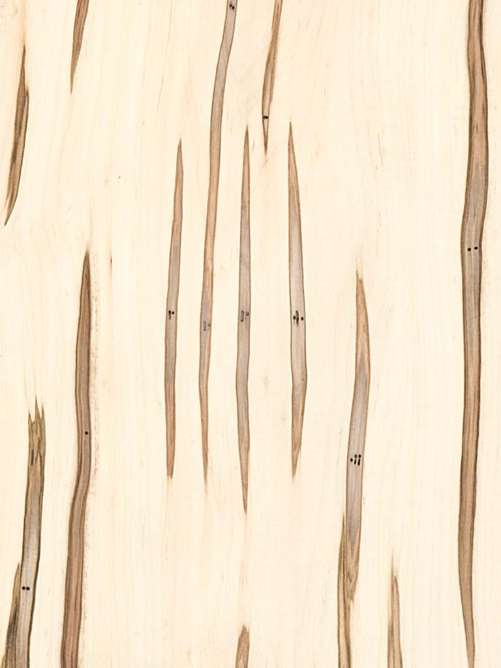 From the same tree that produces maple syrup, comes this beautiful veneer that ranges in color from snow white to warm yellow; has a close, fine luminous texture; and a lovely straight grain that may be interspersed with natural character marks. A wide range of gorgeous figures and wild grain distortions—from curly to bird’s eye to maple burl—are sought after for distinctive paneling and furniture. Flat cut maple displays the distinctive heart or cathedral pattern. Learn About Veneer Cut & Matching
From the same tree that produces maple syrup, comes this beautiful veneer that ranges in color from snow white to warm yellow; has a close, fine luminous texture; and a lovely straight grain that may be interspersed with natural character marks. A wide range of gorgeous figures and wild grain distortions—from curly to bird’s eye to maple burl—are sought after for distinctive paneling and furniture. Flat cut maple displays the distinctive heart or cathedral pattern. Learn About Veneer Cut & Matching -
 Mappa burl is actually the burl wood of a European poplar. This highly decorative veneer is particularly contrasty—its light brown heartwood is peppered by an unusual darker, bark-like pattern of tight clusters. This burl is stunning—an extraordinary and unexpected choice for furniture, cabinetry, and architectural applications. Learn About Veneer Cut & Matching
Mappa burl is actually the burl wood of a European poplar. This highly decorative veneer is particularly contrasty—its light brown heartwood is peppered by an unusual darker, bark-like pattern of tight clusters. This burl is stunning—an extraordinary and unexpected choice for furniture, cabinetry, and architectural applications. Learn About Veneer Cut & Matching -
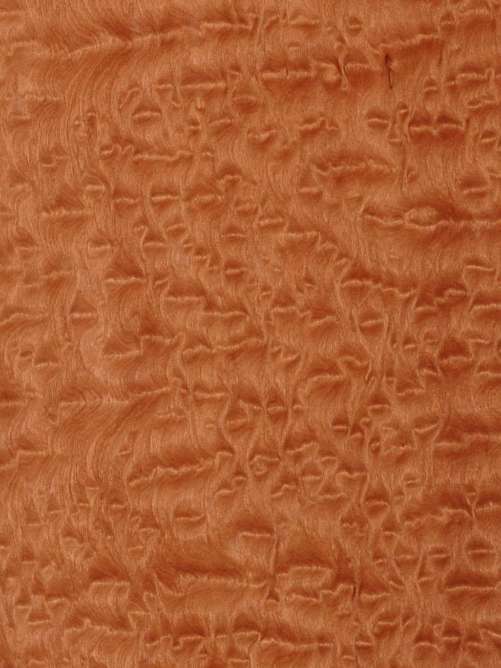 One of the largest trees in equatorial Africa, this tropical hardwood’s immense size ensures large leaves and volumes of veneer well suited for architectural use. Regarded for its shimmering luster that refracts light, this species ranges from pinkish brown to rich red in color with a fine, even texture, and a typically straight grain that may be decorated with a wide range of widely variable figures, including a highly prized Pommele. As with most veneers, almost every log is unique. Learn About Veneer Cut & Matching
One of the largest trees in equatorial Africa, this tropical hardwood’s immense size ensures large leaves and volumes of veneer well suited for architectural use. Regarded for its shimmering luster that refracts light, this species ranges from pinkish brown to rich red in color with a fine, even texture, and a typically straight grain that may be decorated with a wide range of widely variable figures, including a highly prized Pommele. As with most veneers, almost every log is unique. Learn About Veneer Cut & Matching -
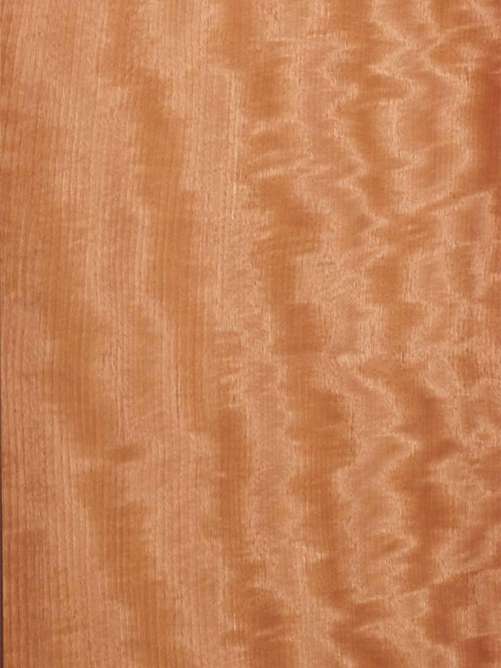 One of the largest trees in equatorial Africa, this tropical hardwood’s immense size ensures large leaves and volumes of veneer well suited for architectural use. Regarded for its shimmering luster that refracts light, this species ranges from pinkish brown to rich red in color with a fine, even texture, and a typically straight grain that may be decorated with a wide range of widely variable figures, including a highly prized Pommele. As with most veneers, almost every log is unique. Learn About Veneer Cut & Matching
One of the largest trees in equatorial Africa, this tropical hardwood’s immense size ensures large leaves and volumes of veneer well suited for architectural use. Regarded for its shimmering luster that refracts light, this species ranges from pinkish brown to rich red in color with a fine, even texture, and a typically straight grain that may be decorated with a wide range of widely variable figures, including a highly prized Pommele. As with most veneers, almost every log is unique. Learn About Veneer Cut & Matching

